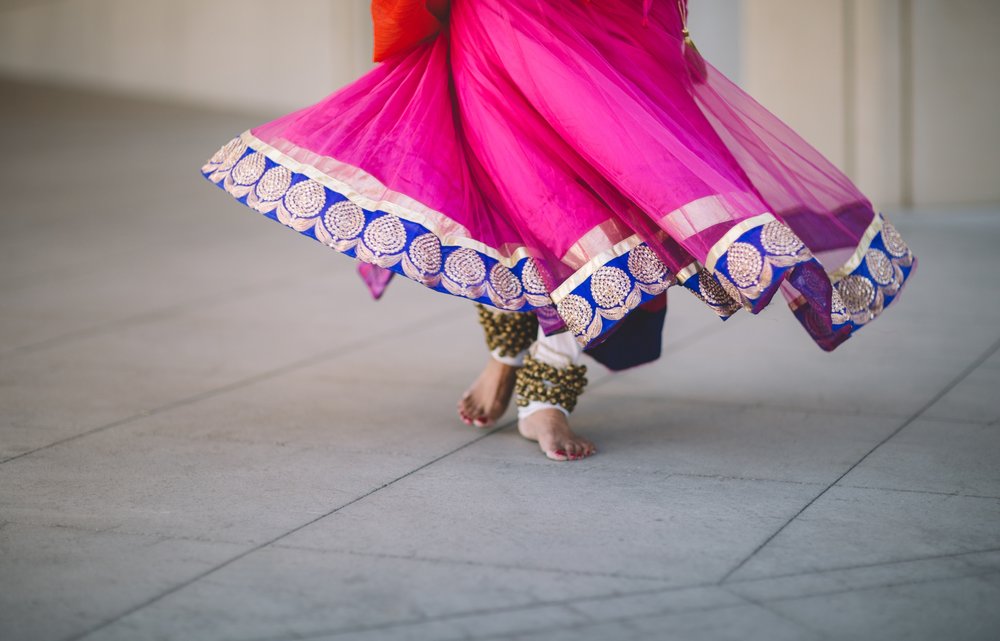Editor’s Note: The original version of this article was published at The Advance Initiative on February 21, 2018. It has been republished by the permission of the author and The Advance Initiative.
“Do you hear that, Shine?” I asked my wife. It was a sound straight out of my church childhood – the all-too-familiar tempo of clapping in unison with every, single, beat. But we were at a conference for second or third generation Indians, not immigrants.
“What is that?” She pushed the door open, and we looked right at the stage. The praise member was strumming a guitar, but I was hearing notes played with the exotic twang of a sitar. The dude striking the djembe produced tones and rhythm I might hear from a tabla. By now I knew what I was about to hear would not be found in the CCLI catalog.
It sounded like we were about to sing “Ek Ladki Ko Dekha,” a renown old school Bollywood song that spans generations. But the vocals began, “Rabb Ki Howe Sana Hamesha…” We were singing an Indian gospel song in Hindi.
I had never heard this before. Neither did most of my fellow second gen mallus (or ABCD’s – American Born Confused Desis – depending on your cultural identity perspective).
Yet it wasn’t long before most of us were clapping and singing along in Hindi, a tongue most of us do not know but can’t help being familiar with. I cannot remember how many times we repeated the stanzas. But I do recall looking around the Advance Initiative conference and seeing ear-to-ear smiles, hearing the clapping, and feeling the passion.
When the Jackson Heights Community Church team led us in Amrit Vani Teri, a call-and-response Indian Christian song, my mind and heart were divided. I was singing as loud as I could, but I was also wondering, “What was I experiencing? Why so much resonance?”
Singing A New Song
The reason for my confusion was that I don’t speak Hindi, but I speak Malayalam.
In India, there are 22 official languages, including Hindi. But my wife and I grew up in households that spoke both English and Malayalam, as Malayalam is the official language of Kerala, a state in southwestern India where my wife’s family and my family hail from.
Whereas Christians make up only 2.3 percent of India’s population, in Kerala, the number jumps up to 18 percent of the population.
So from my childhood, dozens of Malayalam hymns and choruses are permanently lodged in my memory. Many of those I vaguely understand (no small feat given that I only speak the language conversationally).
But I have often lamented that beyond the borders of my immigrant church in America, or even the borders of Kerala, I had no song to sing to Indians who weren’t like me or from the same state. I was deeply saddened that though doubting Thomas brought the Gospel to India, the saving knowledge of Christ has yet to sweep over her.
Imagine, then, the mercy of God as He met us through singing in Hindi at the conference. What a delight to have scales fall from our eyes and behold the risen Christ building His church from Kerala to New Delhi to Nagaland to Maharashtra.
As we sang, the Narnian-like winter of our souls began to thaw and melt, and the Lord of the color green was giving us fresh courage and confidence. Not even the Gateway of India can stop the coming Kingdom, our promised resurrection foretold in His.
The Conductor
18 years earlier, Shiny and I had sang in corporate worship with 10,000+ people at the Urbana Missions conference. There we had our first taste of praise songs filling the earth with a thousand tongues including English, Spanish, Mandarin, Creole, and Swahili.
The memories of that time have become almost painful stabs of joy – what C.S. Lewis called sehnsucht, the German word for “inconsolable longing.” At this recent conference, singing with our Indian brothers and sisters, we experienced sehnsucht again.
Now, my wife and I don’t speak Hindi (yet – I’m looking at you Rosetta Stone!), our ability to sing in Malayalam is a little rusty, and we are still unapologetically more comfortable singing western Christian songs in English. But our song is still being shaped by the Conductor.
We are all portraits being drawn into continually sharper focus. We are part of a global ensemble with acoustic and electric guitars and sitars, drums and tablas, keys and brass, and beatbox and dancing. As sure as the dimensions of the Gospel are higher, wider, deeper and longer than we can ask or imagine, so too, is the Gospel harmony we are learning as it fills the earth as far as the east is to the west.
A Singing Savior
Though it won’t come easy, Jesus is making all things new. And He seems to sing, too. In the Gospels according to Matthew and Mark, at the end of the final meal on the night Jesus was betrayed, Jesus and His disciples sang together before leaving the upper room. Historians and scholars say they likely sang from Psalm 118, the last of the Passover Psalms.
The repeated chorus of Psalm 118 is “His steadfast love endures forever.” Just imagine it. Imagine a singing Savior. Imagine the Man of Sorrows and His disciples singing Psalm 118 together before heading for Gethsemane. It’s enough to move us to worship.
And because we’re learning to sing in Hindi, maybe, just maybe next time, we will sing and dance with shoulders shrugging, feet bouncing, and fingers and thumbs stretched out and pointing up like our Punjabi brothers and sisters, to the Truth that His steadfast love endures forever.

